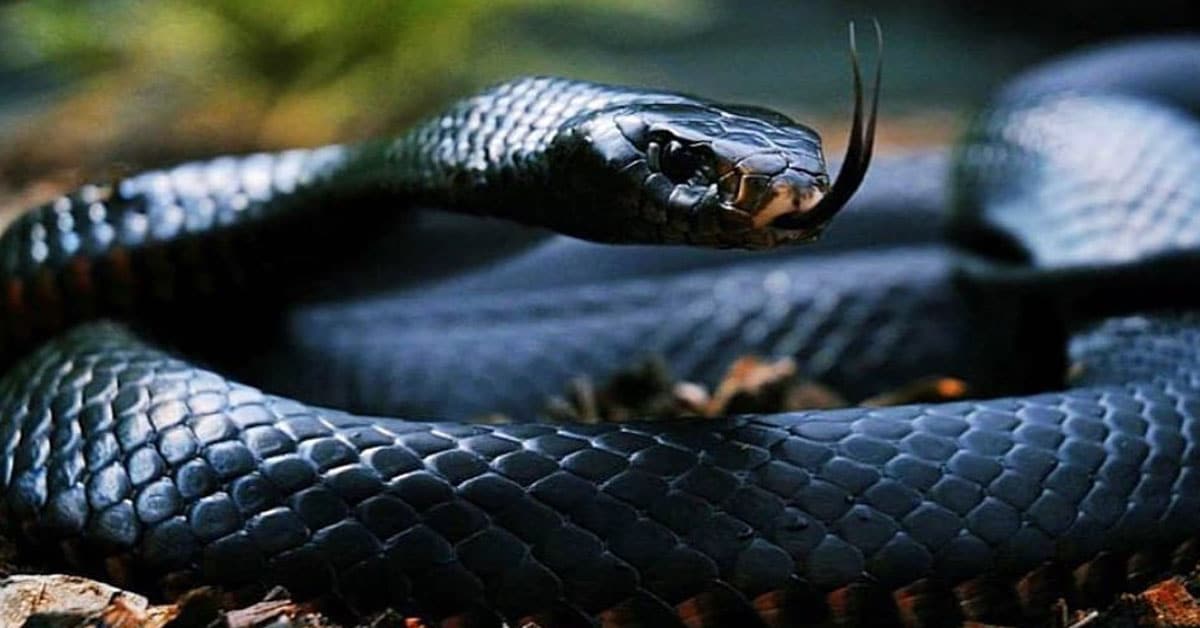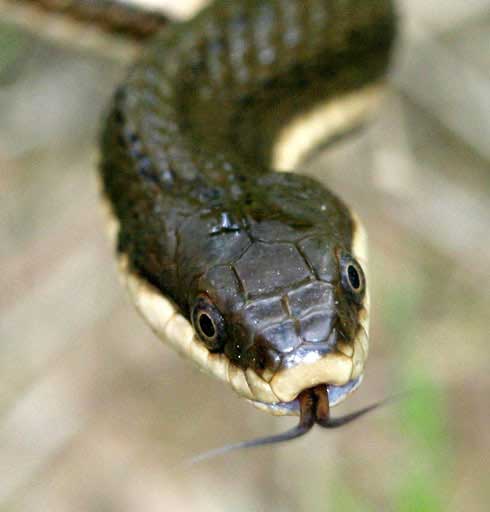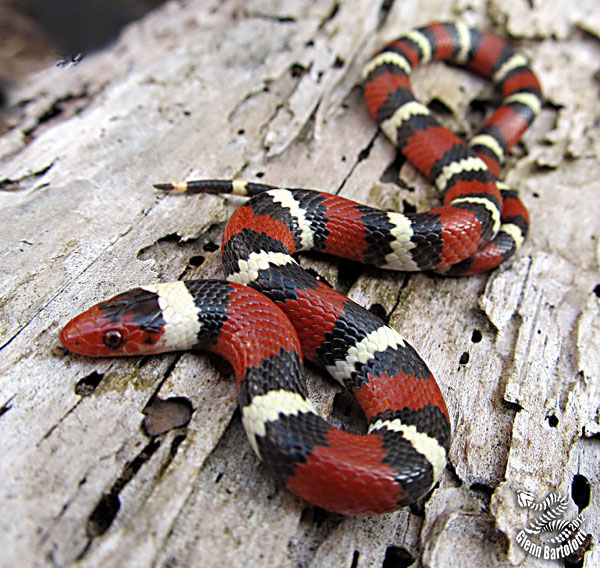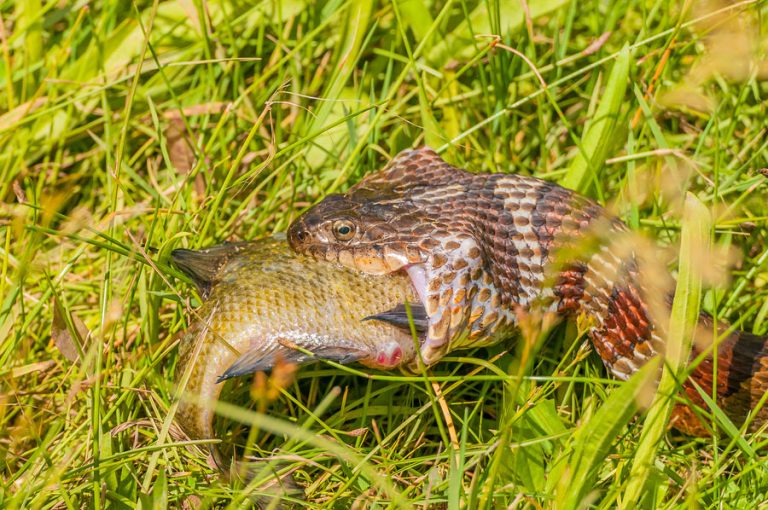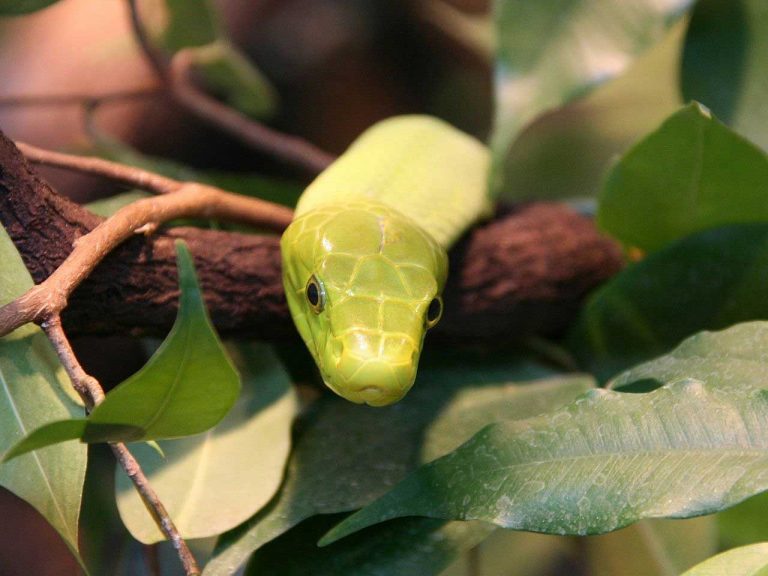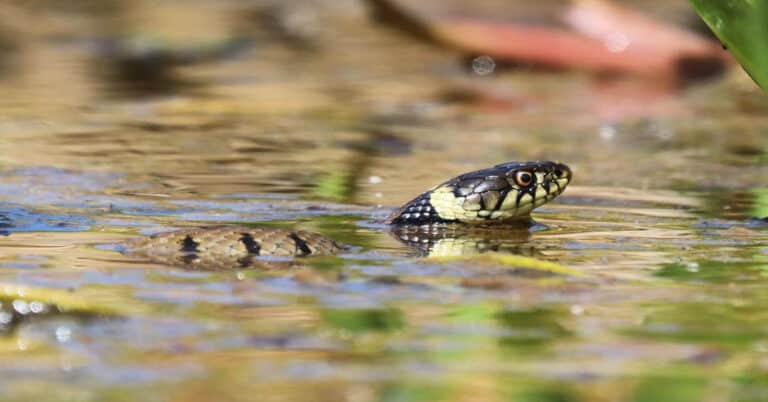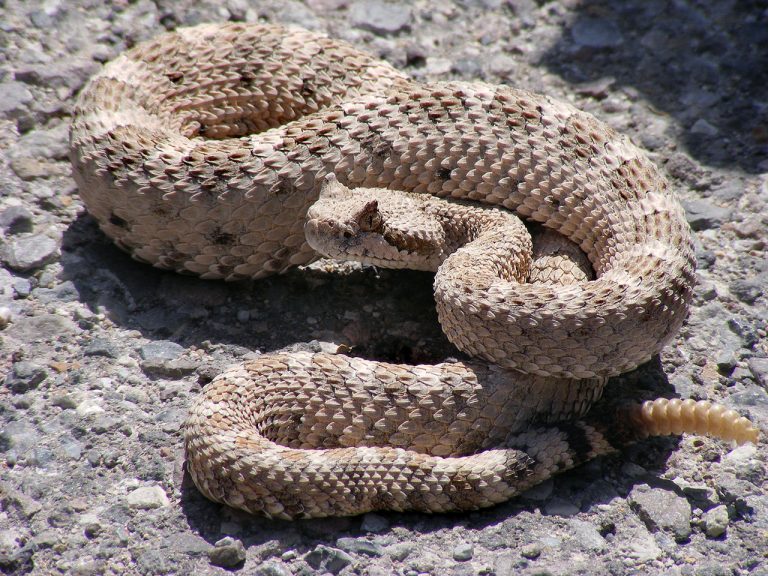Top 10 Most Venomous Snakes on the Planet
Snakes were brought into this world during the middle Cretaceous period roughly 100 million years ago.
Since then, many of these species have evolved into the worlds deadliest animals. There are two primary groups of snakes, those that are venomous, and those that are non-venomous constrictors.
In this list, we’ll be going over the top ten most venomous snakes in the world, ranging all parts of the western hemisphere, most of which belong to Australia. It comes to no surprise that Australia hosts the majority of the worlds deadliest snakes.
Steve Irwin had to have something to make a career on, right?
We’ve decided to base this list on an LD50 scale; the LD50 level measures how much venom it takes to kill a small rodent, generally tested on rats and mice.
Lastly, before we begin this list, we’d like to enlighten you on the difference between poison and venom.
Many people writing similar articles, or making videos for their animal YouTube channels will list these beings, along with others, as poisonous, which is just simply inaccurate.
Poison is absorbed through the skin, or it is ingested. This means things like some species of plants, berries, frogs, or jellyfish are poisonous. They do not have venom glands that inject you with toxins.
Venom however must be injected, coming from species of snakes, most spiders, all species of scorpions and more.
Okay, now that you know the difference between poison and venom, let’s get into it! Continue reading to see our list of the top ten most venomous snakes in the world:
10. Western Brown Snake
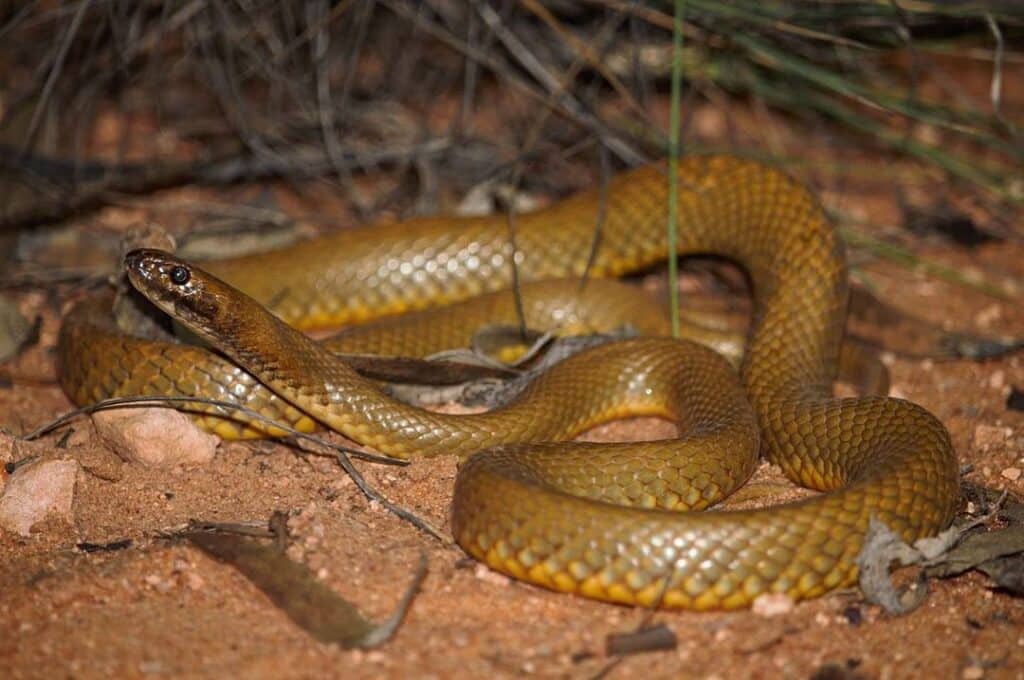
LD50: 0.473 kg
Injects: 74 mg
We begin with the tenth-most venomous snake on the planet, the Western Brown Snake.
This particular specimen lives throughout the continent of Australia, making it the widest-ranged brown snake in the country. In fact, it lives in some of the same areas as the Eastern brown snake, as well as the Collared brown snake and Northern brown snake.
These venomous snakes feed on a wide variety of vertebrate pray, such as a multitude different of lizards, other snakes, frogs, young birds, as well as small mammals such as mice and rats.
This, along with their venom, is what makes them so dangerous to us humans; mice are attracted to peoples homes, and it brings Western brown snakes in close to that proximity considering.
Their venom has high neurotoxic and hemotoxic properties, and it will almost certainly lead to your death if you do not get proper medical treatment immediately.
9. Russell’s Viper
LD50: 0.75kg
Injects: 20-275mg
Russell’s Vipers are the most venomous species of viper in the world, inhabiting the entirety of India, where they boast the highest mortality rate of any other snake native to the country.
These beautiful snakes feed mostly on rodents, though they’re known to kill and eat small reptiles, land crabs, scorpions, and some other arthropods, to our surprise.
Juveniles are known to be cannibalistic, and they generally switch their diet strictly to rodents as they mature.
Russell’s vipers possess enough venom to kill 22 people, which comes as no surprise when looking at the annual mortality rate, which lies between 15,000 and 25,000 human deaths each and every year.
8. Caspian Cobra
LD50: 0.4 kg
Injects: 75-125 mg-to-over 700 mg
Also known as the Central Asian cobra, Ladle snake, Oxus cobra, or the Russian cobra, this medium-sized snake inhabits the Middle East. They range from north eastern Iran to throughout northern India, and are found as high north as the Aral Sea.
These highly venomous snakes are generally quite small, usually growing around three-and-a-half feet in length, though they can on occasion reach up to five total feet in length.
The venom of this species is absolutely remarkable, being the most toxic of any cobra species in the world, as it just edges out the Philippine cobra drop-for-drop.
Caspian cobras possess enough venom to kill 42 people in one single bite, yikes!
7. Many-Banded Krait
LD50: 0.09 kg
Injects: 4.6-19.4 mg
Also known as the Taiwanese krait or the Chinese krait, these ridiculously beautiful snakes inhabit Southeast Asia in places such as India and Southern China.
Just as the many-banded krait is beautiful however, it’s equally as deadly.
This species generally grows between 3.5-and-5-feet long, with the longest recorded specimen coming it at 6.1 feet in length.
Many-banded kraits boast venom toxic enough to kill roughly 24 healthy humans.
What’s more, this particular snake has such a high mortality rate that there is one case where a group of three people were bitten consecutively by the same snake, and all three died from respiratory failure before even reaching the hospital.
This snake also has a cousin, the Banded Krait, pictured to the left, also one of the most venomous snakes on the globe.
Banded kraits are arguably more beautiful than many-banded kraits, but they don’t quite make the list of the top ten most venomous snakes in the world.
Though less potent, the banded krait does inject up to eight times more venom than the many-banded krait, making them equally as dangerous to those bitten.
6. Belcher’s Sea Snake
LD50: 0.067 kg
Injects: up to 4mg
The Belcher’s Sea Snake, also known as the Faint-Banded Sea Snake, is an extremely venomous species of snake from, you guessed it, the coast of Australia.
It’s not just Australia itself, even the bodies of water surrounding the continent aren’t safe as they’re also inhabited by the most venomous snakes in the world, amongst many other things.
They also inhabit the Indian Ocean, as well as the Gulf of Thailand, New Guinea, Indonesia, and the coastal regions of the Philippines.
Being the second-most venomous sea snake on the planet, the Belcher’s sea snake can kill a human in under 30 minutes. And, should you get bitten, you’ll most likely be a fisherman on a boat in the ocean, making it unlikely you’ll get antivenom soon enough.
This becomes dauntingly true when you become informed that one drop of this snakes venom can kill upwards of 1,800 people.
5. Tiger Snake(s)
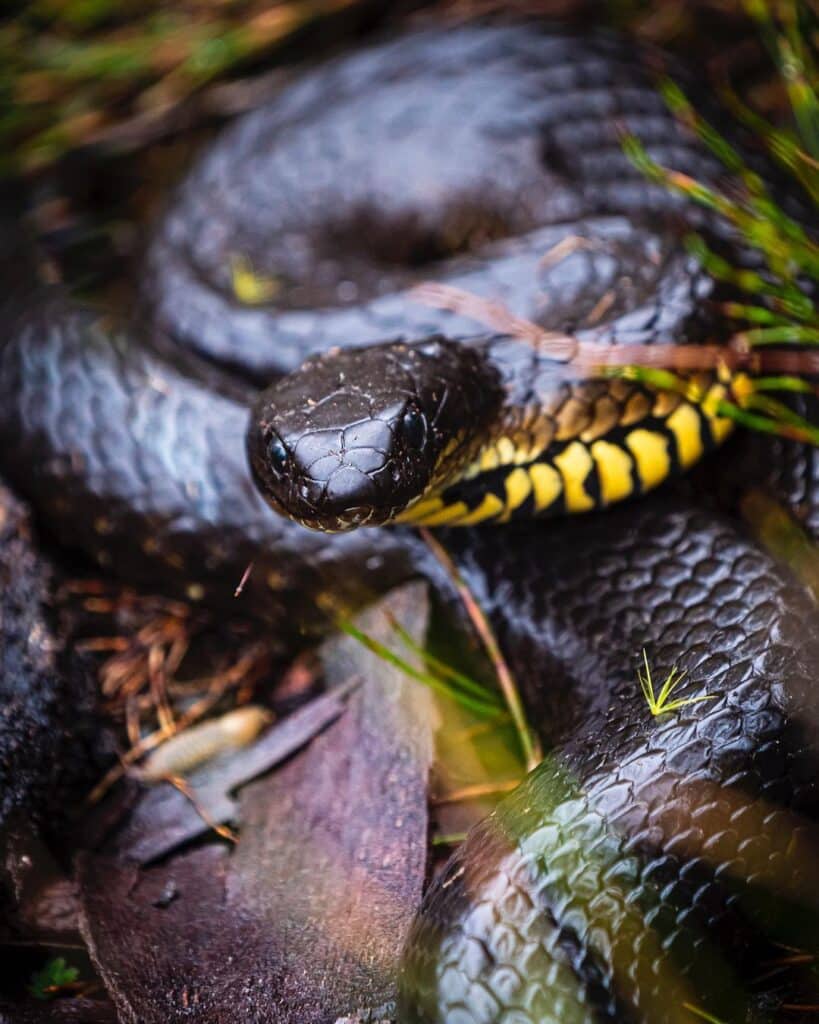
Mainland Tiger Snake LD50: 0.12 kg
Injects: 35-180 mg
Tiger snakes are a diverse genus of snake, from Chappell Island tiger snakes, to black tiger snakes, common tiger snakes, western tiger snakes, eastern tiger snakes, and mainland tiger snakes, all of which are some of the most venomous snakes on the entire planet.
These specimens bear live young, much like that of rattlesnakes and anacondas, and they inhabit Australia and its costal land masses.
Tiger snakes are false cobras, meaning they flatten their necks when threatened like a number of other venomous snakes.
Steve Irwin made a top 10 list of the most venomous snakes in the world himself, listing off four different Tiger snakes in that list, making them one of the most dangerous overall snake species on the planet.
The problem with this, with as many different types as there are, there isn’t enough information on each individual species, making it difficult to list them out separately.
It can also be quite easy to misidentify them, as the majority of its species lose their stripes as they mature.
So, therefore, we’ve decided to add them to our list in one category.
Irwin’s ranking of these snakes has the Chappell Island Tiger snake at no. 8, the Western Tiger snake at no. 7, the Black Tiger/Mainland Tiger snake at no. 5, and the Eastern Tiger snake at no. 4.
Left untreated, a bite from any of these species kills 60% of humans. And, just because you get the antidote doesn’t mean you’ll live.
4. Dubois’ Sea Snake
LD50: 0.044
Injects: 0.4-0.7 mg
Also known as the Reef Shallows sea snake, the Dubois’ sea snake is undoubtedly the most venomous sea snake in the entire world.
Dubois’ sea snakes inhabit the northern, western, and eastern coasts of Australia, as well as Papua New Guinea, New Caledonia, the Coral Sea, Arafura Sea, Timor Sea, and the Indian Ocean.
They feed on Moray eels and a number of fish found along the sea floor. Dubois’ sea snakes will bite humans if provoked, but luckily for us, like most sea snakes, they’d rather not give us the time of day.
Adults of this genus can reach upwards of five feet long, but they’re generally found to be around three feet in length.
Dubois’ sea snake venom is injected in quite small doses, that similar of the Inland Taipan, but it’s slightly less toxic.
Symptoms of invemonation from a Dubois’ sea snake can vary depending on the individual bitten, but can include pain around the area bitten, nausea, vomiting, diarrhea, swelling of the tongue, dryness of the throat, extreme thirst, profuse sweating, headaches, body and muscle aches, stiffness of the body and neck, fatigue, weakness, anxiety, drowsiness, and confusion.
If left untreated, bite victims will experience paralysis, respiratory failure, and cardiac arrest, which of course leads to certain death.
3. Coastal Taipan
LD50: 0.106 kg
Injects: 120-400 mg
Also known as the common taipan, these extremely venomous snakes are absolutely extraordinary. They inhabit northern Australia and much of the island of New Guinea. The coastal taipan is the largest venomous snake in Australia, reaching lengths of 9.5 feet, though they generally range between six-and-seven feet.
This specimens diet consists of rats, mice, bandicoots, and a wide variety of birds. They deliver several quick bites to their victims; then their move is to lay in wait for the animal to die, which doesn’t take long at all.
Bite victims can expect headaches, nausea and/or vomiting, collapse, convulsions, paralysis, internal bleeding, myolysis (destruction of muscle tissue), kidney damage, and even kidney failure.
100 percent of untreated bite victims died, which makes sense when these venomous snakes boast enough toxins in a single bite to kill 56 people.
It generally takes about two-and-a-half hours to kill a human, but has done so in as little as 30 minutes. So, in conclusion, should you see this snake in the wild (like every other snake on this list), keep your distance if you enjoy living.
2. Eastern Brown Snake
LD50: 0.0365 kg
Injects: 5-155 mg
Also known as the common brown snake, the eastern brown snake inhabits the entire east coast of Australia, and stretches as far as some parts in central Australia.
Their diet is made up entirely of vertebrae animals, consisting mostly of mice, rats, rabbits, small birds, small lizards such as skinks, and sometimes even frogs.
This snake generally reaches lengths of five feet, but can grow upwards of past six feet, with the largest one ever recorded being 7.9 feet long.
Interestingly enough, specimens from the northern areas are larger than the ones in the southern areas.
The incredibly potent venom these snakes possess accounts for more deaths in Australia than any other species, as it is very commonly encountered by people. From 2005 to 2015, eastern brown snakes accounted for 41% of identified snake bite victim deaths, and today that total sits around 60%.
Of the venomous snakes on this list, that is what makes eastern brown snakes the most dangerous to humans of them all.
The neurotoxic venom of an eastern brown snake causes swelling and redness around the wounds (two puncture wounds of course), intense pain around the effected area, difficulty breathing, headache, nausea and/or vomiting, blurred vision, sweating, salivating, numbness in the face or lips, cardiac arrest, blood clots, which leads to, you guessed it, death.
It doesn’t take long for the venom to do its job either, with the clotting affects starting within just 30 minutes of the bite, collapse being recorded in as little as two minutes.
What’s more, it only takes 3mg this invasive snakes venom to kill a person, meaning it possesses enough venom to kill 58 people in a single bite.
1. Inland Taipan
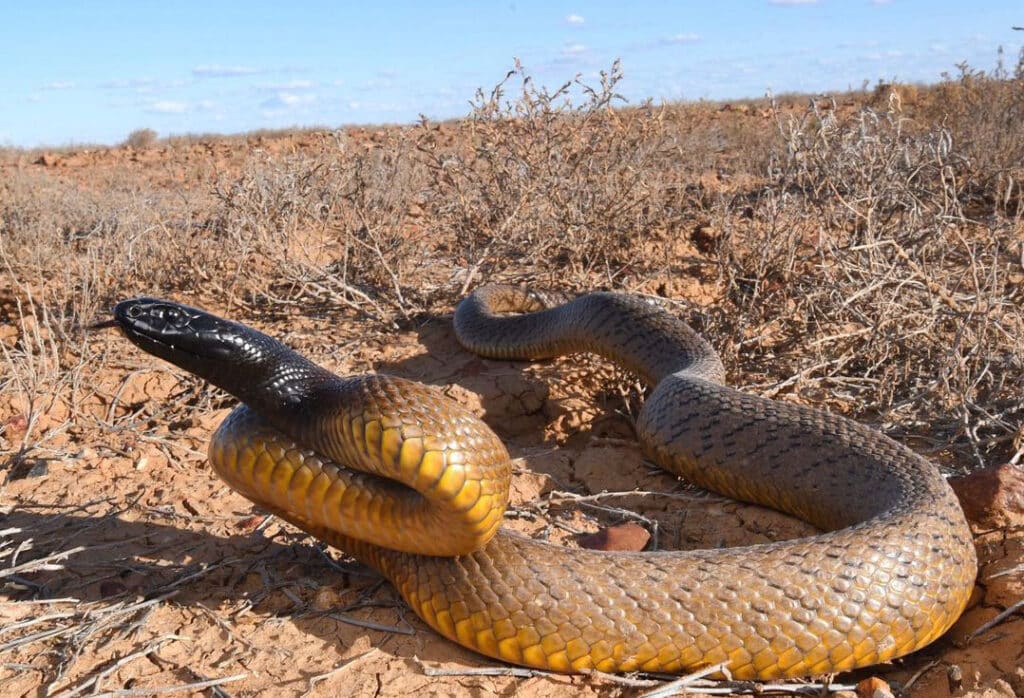
LD50: 0.025 kg
Injects: 44-110 mg
Also known as the western taipan, the small-scaled snake, or the fierce snake, each taipan species is actually one of the most venomous snakes in the world. And, the most venomous of the taipan species just so happens to be the most venomous snake in the world.
It even has the most toxic venom of any land animal living today, which is just extraordinary.
Part of what makes this snake so dangerous is the fact that it gives zero warning, and may strike its victim multiple times. The inland taipan possesses enough venom to kill 289 grown adults or 250,000 mice.
Absolutely remarkable right?
This species strictly hunts mammals, mostly rats and mice. Therefore, it’s designed to kill warm-blooded creatures, which can be bad for us. However, humans are rarely in close proximity to the snake, totaling a low rate of human deaths per year.
The Inland taipan is found in the black soil plains of central and eastern Australia.
They have a relatively low venom yield as opposed to other venomous snakes, which is just another thing that makes these reptiles so dangerous. For example, its cousin, the coastal taipan, injects three-to-four times the amount of venom as the inland taipan, and it’s still four times less potent.
Their venom consists of neurotoxins, hemotoxins, myotoxins, and a hyaluronidase enzyme, which together bring symptoms of headaches, nausea and/or vomiting, abdominal pain, collapse and paralysis, and often times death.
The inland taipan is so venomous in fact that it is 650 times more potent than an western diamondback rattlesnake, it’s 850 times more potent than an eastern diamondback, and it’s 50 times more potent than the venom of an Indian cobra.
Once you’ve been bitten, you’ve got less than 45 minutes to get a dose of anti-venom. However, if their venom is injected directly into your bloodstream, which is not unlikely, this means certain death in under 30 minutes.
It can also kill a horse in a mere five minutes.
Long story short, keep your distance from this beautiful snake, because the consequence of getting too close will cost you your life.
Honorable mentions:
Central Ranges Taipan:
What can we say, taipan’s are absolutely notorious for their potent venom, as there are three species of them in the top 20 most venomous snakes in the world.
Central ranges taipan’s, like their cousins, inhabit Australia, and they have an LD50 level of 0.075, making them roughly four-times less potent than that of the inland taipan, which, as mentioned above, has an LD50 of 0.0225.
Black Mamba:
Black Mamba’s are the second longest venomous snakes in the world, just behind the King Cobra, reaching upwards of 14 feet in length at full maturity. These beautiful snakes inhabit the northern regions of southern Africa, and it has a 100 percent mortality rate for bite victims left untreated.
That’s right, not a single human has ever been bitten by this snake, not gotten antivenom, and lived. That’s why, though they aren’t in the top 10, black mambas needed to be mentioned in this list as one of the most venomous snakes on earth.
This remarkable snake has an LD50 levels of 0.28kg, it injects between 280 and 400mg of venom with each bite, resulting in enough to kill 19 people.
Forest Cobra:
Forest Cobra’s inhabit tropical rainforest regions of western and central Africa, and they are perhaps the most dangerous species of cobra in the world. This is partially thanks to their venom potency, but more so due to the yield they give.
Forest Cobra’s have an LD50 level of .225kg, though they’ve been known to inject upwards of 1100mg of venom in a single bite, resulting in the potential death of 65 people.
All cobras have a high venom yield comparative to other venomous snakes, but that’s just astonishing.
Be sure to check out our venomous snakes piece on Water Moccasins as well if you enjoyed this piece.
And, if you enjoyed this piece, feel free to share it on social media!

I started writing in the fourth quarter of 2018. I wrote solely about MMA and boxing up until October of 2022, where I began writing about animals; primarily dangerous, venomous species. They’ve always fascinated me. Considering, my goal is to make a living by teaching people about these wonderful creatures. You can check out my Facebook page, where every article I’ve ever written currently sits, or you can check out my Twitter page, where I’ve shared all of my animal pieces to date.

